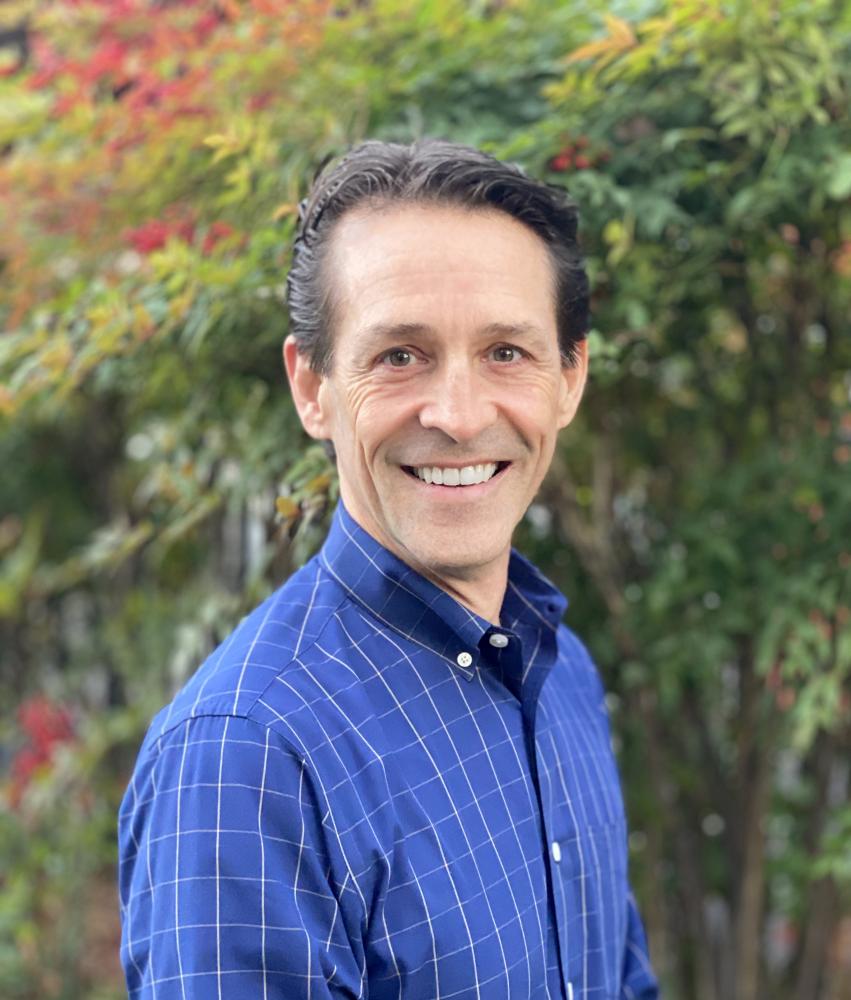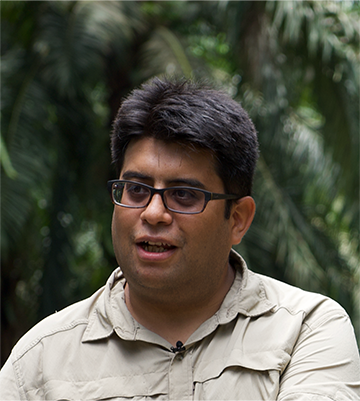During this short interview, Dr. Sean O’Brien, President & CEO at NatureServe, and Dr. Carlos Zambrana-Torrelio, Associated Vice President for Conservation at EcoHealth Alliance, discuss the intersection between biodiversity decline, the destruction of our natural world, and virus outbreaks like the coronavirus pandemic. Dr. Zambrana-Torrelio, one of the few global experts working on the frontier between human and ecosystem health, identifies three key risk components for emerging infectious diseases and explains what we can do to prevent future outbreaks. Listen and learn how healthy ecosystems and rich biodiversity benefit overall public health.
About the Speakers:

Dr. Sean O’Brien, President & CEO at NatureServe
Sean, a life-long environmentalist, brings more than 20 years of expertise in local and international non-profit leadership to NatureServe. For the past 10 years, he has worked at James Madison’s Montpelier as the Executive Director of the Center for the Constitution, and, for the past seven years, as the Executive Vice President and Chief Operating Officer. While there, O’Brien directed the organization’s operations with a focus on fundraising, budget management, and strategic planning, which resulted in better alignment between programming and the company’s vision.
"As we face the sixth extinction and consider the role of biodiversity in ecosystem and human health, the need for the work of NatureServe has never been greater," said Sean. He adds, "I look forward to working on these critical issues and supporting the expansion of NatureServe’s dynamic data, tools, and expertise as a powerful force for global conservation."
Sean graduated from the University of Virginia with a Bachelor's degree in Environmental Science, and holds a Ph.D. from the same institution in Environmental Sciences with a focus on tropical forest ecology. He was awarded a prestigious Post-Doctoral Fellowship in Princeton University’s Department of Ecology and Evolutionary Biology and Center for Energy and Environmental Studies. He has over 13 publications and served on numerous boards including the Presidential Precinct and was appointed by three governors to the Virginia Civics Commission.

Dr. Carlos Zambrana-Torrelio
Carlos Zambrana-Torrelio is the Associated Vice President for Conservation and Health at EcoHealth Alliance and a Research Associate at the Bolivian National Herbarium. Dr. Zambrana-Torrelio works on the intersection between animal and human health. He is particularly interested in how biological diversity—from viruses to ecosystems—respond to anthropogenic gradients (e.g. from cities to forests). He works closely on the links between biodiversity and health with the United Nations Convention on Biological Diversity (CBD). Dr. Zambrana-Torrelio holds a PhD from Sapienza Università di Roma on Environmental and Evolutionary Biology. Dr. Zambrana-Torrelio's vision: “I strongly believe that the future of Latin America relies on a deep and transboundary collaboration among countries. the NS LAC is the best example of this vision. I look forward to support this initiative.”
Transcript
Sean O’Brien: Hi, I'm Sean O'Brien, president and CEO of NatureServe. We are the global leader in the use of science, data, and technology to conserve biodiversity, and I'm here today with Carlos Zambrano-Torellio, who works with EcoHealth Alliance and is also on the board of NatureServe, to talk about the current situation that we're in with the COVID-19 virus. Thank you, Carlos, for being here and maybe you could tell us a little bit about yourself and about what EcoHealth Alliance does.
Carlos Zambrana-Torrelio: Thank you so much for the invitation, Sean, to talk about this issue. I'm the associate vice president for conservation and health at EcoHealth Alliance. EcoHealth Alliance is a non-profit [and] we've been working on the link between biodiversity and human health for over the past 40 years, and we’ve been working all around the world, mostly understanding and studying how biodiversity is affected by different anthropogenic activities and how diseases like the COVID-19 can jump from animals to humans. So, we've been working on these issues for a long time.
Sean: So at NatureServe, we've been working to protect biodiversity in the Americas for about 50 years and it has been [for], you know, any number of reasons, from just the aesthetic value of species to protecting the health of ecosystems and ecosystem services, and human health has always been a part of why it's important to protect biodiversity. Lately we've been hearing a lot about the destruction of habitat and how that relates to things like this, the disease jumping from animals to humans. Can you talk a little bit about the role of destruction of habitat and what's happening today?
Carlos: Sure. You know, most of the diseases that we know that emerge in humans come from animals—from domestic and from wildlife. These are called zoonosis, and there are around 435 diseases that jumped from animals over the past 60 years into humans. Most of these, around 60%, 65% of these “spillover events” that we call [them], are really related to some form of language change—for example, deforestation or increases in agricultural activities. Essentially, at the end, what happens is [that] when these activities human activities are happening, we increase the contact with wildlife. So, we are getting more encounters with these animals and therefore we get more viruses coming from these animals to us.
Just to be clear, biodiversity itself doesn't represent a threat to humanity—it’s that we humans are getting more comfortable with destroying the habit of these animals and we're getting more encounters with these animals, and therefore we are getting more diseases in humans.
Sean: So, Carlos, as you mentioned, this is not the first time that a disease has jumped from animals to humans—and I'm thinking of other scary diseases like Ebola and AIDS and other things—and it's not just land use changes and encroachment on habitats. It's also the wildlife trade and the use of wildlife in in different ways.
Carlos: That's right, yes. So, this is not the first time we've seen these epidemics [and] pandemics coming from wildlife. HIV jumped from primates to humans, Ebola is linked to deforestation and jumped from bats to humans. In Latin America specifically we have several different examples of hemorrhagic fevers like hantavirus, or recently in Bolivia we have Machupa virus that jumped from rodents into humans, causing very quickly high mortality.
But it's not just that, it's also the human activities, human practices, that are leading to diseases. So [with] COVID-19, we think we have very good evidence that it jumped from bats into humans in a wildlife market in China in Wuhan. What happens in these places is that we get wildlife from different regions in China and then people go and buy meat, this is for meat consumption, and then there are several species, different types of animals, mixed all together in the same place. So, if you can imagine, we have bats, pangolins, sometimes dogs, cats, civets—all different species of domestic and wild animals all mixed together. Since they don't have necessarily good refrigeration systems, all animals are kept alive there until the moment they are sold to humans. So, when they are sold, there's the moment when the people kill the animal and all the blood, all these things, get mixed into other animals, and then there is the opportunity for spillover of viruses. That's what we believe that happened this time. There are two to hypotheses that have been discussed: one is jumping from a bat directly to a human, and then the other idea is that it jumped from a bat to a pangolin, which changed a little bit the virus, and it jumped to a human.
Sean: Right. So, you know right now we're talking about things that sound very scary when it comes to biodiversity, but the World Economic Forum estimates that fifty to seventy thousand plant species are harvested for traditional or modern medicines, and about 50% of modern drugs have been developed from natural products originally. Can you talk a little bit about the importance of biodiversity as it relates to vaccines and promoting human health?
Carlos: So, we receive so many more benefits from wildlife [and] from biodiversity in general that it's very important to clarify that issue. Several treatments for health come from plants. Recently it has been discussed that there is a chloroquine medicine that has been used for years to treat malaria, can be used in combination with other medication, can be used to cure or to treat COVID-19. But this quinine comes from a plant from the Amazon, so it's important to keep all this biodiversity but also work to explore all the active principles that are in these plants that can potentially be used for human health.
Sean: Yes, it's very exciting to think that there could be some plant out there that's going to provide the cure, and not just in this case but in lots of cases. So, do you have any last thoughts for people when they're thinking about the role of biodiversity and protecting biodiversity in trying to help us prevent this sort of thing from happening again?
Carlos: Yeah, so I think it's important to clarify a few things. First, we talk all the time about the risk of emerging infectious diseases and it's important to clarify that there are three components of risk. One is what we call hazard—in this case, it’s biodiversity, but especially mammal biodiversity, because these mammals are hosts for all these different pathogens, these viruses. Again, the biodiversity is not sick, mammals are not sick with these viruses. But, by itself, biodiversity doesn't represent a risk to humans—it’s when we interact with this biodiversity that we get into trouble.
The second component is the exposure. Exposure is extremely important and it's related to human behavior, and again we are already in trouble because of human behavior because [of] our need or our ideas that, in China for example, that it’s traditional medicine that this type of food is going to make us healthy, it’s putting us in danger. But China is not the only place, this happens all around the world—bushmeat consumption happens in Africa, it happens in Latin America, it happens everywhere. It just happens that this time there is an outbreak in China. By changing human behavior, we will make a big difference in how we handle future epidemics, future pandemics.
Finally, there’s a third component which is vulnerability. Vulnerability is referred [to] and we can understand vulnerability as vaccination, for example. That's why we've been telling people [that] in this case, people older than 60 years are more at risk because they are more vulnerable to this disease. But in other cases, like Zika virus, we also said children that are young, like 5 years or less of age, they are at risk as well because they are developing the immune system. So, vaccination is important, not just for COVID-19 that will come very soon, but also for the regular influenza that is happening every year. For all the things that are available, it's important to vaccinate
When we deal with this problem, we need to consider these three components. Change in behavior and reducing vulnerability in humans. Those are my thoughts about that.
Sean: Thank you for being here today. I was wondering, should people go to EcoHealth Alliance’s website for more information?
Carlos: Yes, please join us. It's www.EcoHealthAlliance.org. You can see our research and what we are doing on the frontline on finding the next potential disease that may jump into humans in the next 10 years.
Sean: Well we're so glad that you guys are out there working on this important issue and trying to help keep us safe, so thanks for what you do and thanks for being here today.
Carlos: Thank you so much for the invitation, Sean. Thank you.